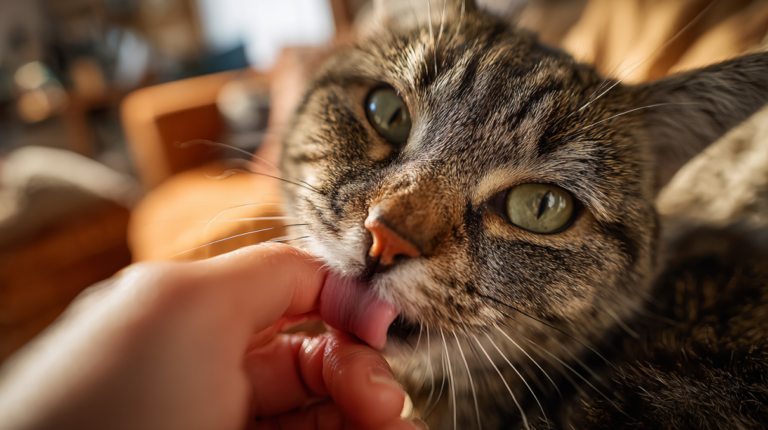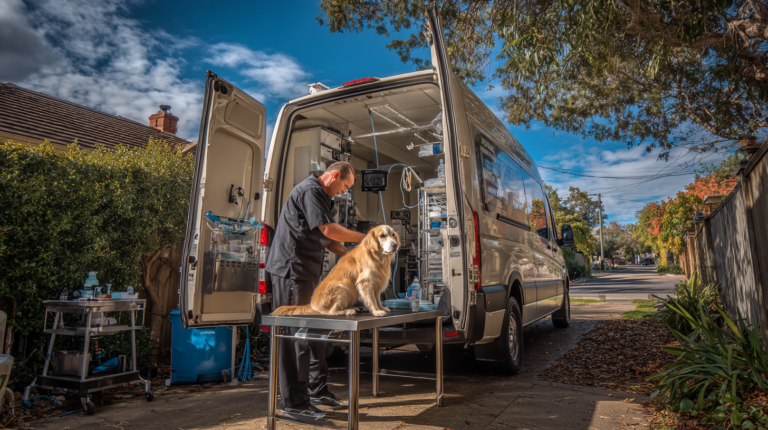Dog vomiting white foam? Discover 5 alarming causes, expert treatment tips, and when to see a vet. Get trusted advice from pet care professionals.
Table of Contents
Picture this: You’re enjoying a quiet evening when suddenly you hear that familiar retching sound. You rush to find your beloved dog hunched over, expelling white, foamy vomit onto your carpet. If you’re a dog owner, this scenario might sound all too familiar. Dog vomiting white foam affects approximately 68% of dogs at some point in their lives, according to recent veterinary studies, making it one of the most common concerns pet owners face.
When your dog vomits white foam, it’s natural to feel worried and confused. Is this a medical emergency? Should you rush to the vet immediately? The truth is, dog vomiting white foam can range from a minor digestive upset to a serious health condition requiring immediate veterinary attention. Understanding the underlying causes, recognizing warning signs, and knowing when to seek professional help can make all the difference in your pet’s health and your peace of mind.
This comprehensive guide will walk you through the five most alarming causes of white foam vomiting in dogs, providing you with expert insights, practical solutions, and clear guidance on when professional veterinary care becomes essential. Whether you’re a new pet owner or have years of experience, this information will help you respond confidently and effectively when your furry friend needs you most.
Understanding White Foam Vomiting in Dogs

Dog vomiting white foam occurs when your pet’s stomach is empty but continues to contract, bringing up gastric juices mixed with air and saliva. This foamy, white substance is essentially stomach acid and bile that has been whipped into a frothy consistency through the vomiting process. Unlike regular vomit that contains food particles, white foam typically indicates that your dog’s stomach is empty.
The foam’s appearance can vary from bright white to slightly yellow or clear, depending on the underlying cause and your dog’s individual digestive chemistry. Sometimes, pet owners mistake this foam for excessive drooling or assume it’s less serious than vomit containing food. However, white foam vomiting can be just as concerning and may indicate several underlying health issues that require attention.
Understanding the mechanics behind this type of vomiting helps pet owners recognize patterns and provide better information to their veterinarian. When dogs vomit white foam, they’re often experiencing stomach irritation, nausea, or digestive distress that prevents them from keeping food down long enough for normal digestion to occur.
Gastric Bloat and Torsion
Gastric dilatation-volvulus (GDV), commonly known as bloat, represents the most dangerous cause of dog vomiting white foam. This condition occurs when a dog’s stomach fills with gas and potentially twists on itself, cutting off blood supply and creating a life-threatening emergency. Large, deep-chested breeds like Great Danes, German Shepherds, and Standard Poodles face the highest risk, but any dog can develop bloat.
The initial signs of bloat often include unsuccessful attempts to vomit, producing only white foam or small amounts of liquid. Your dog may appear restless, pace continuously, or assume a prayer position with their front legs down and rear end elevated. Their abdomen may appear distended or feel tight when gently pressed, and they might show signs of extreme discomfort or pain.
Dr. Sarah Mitchell, a veterinary emergency specialist, explains: “Bloat is a race against time. The longer the stomach remains twisted, the more tissue dies, and the lower the survival rate becomes. Pet owners who recognize early signs and seek immediate veterinary care give their dogs the best chance of survival.”
Warning Signs of Bloat:
- Repeated attempts to vomit with only white foam produced
- Visibly distended or swollen abdomen
- Restlessness and inability to get comfortable
- Excessive drooling or panting
- Pale or blue gums
- Weakness or collapse
If you suspect bloat, contact your emergency veterinarian immediately. This condition requires surgical intervention within hours to save your dog’s life. Time is absolutely critical, and even minutes can make the difference between life and death.
Acute Pancreatitis and Digestive Inflammation
Pancreatitis occurs when the pancreas becomes inflamed, disrupting normal digestive processes and causing severe abdominal pain. Dogs with pancreatitis often vomit white foam because their stomachs cannot tolerate food, leading to empty-stomach vomiting episodes. This condition can develop suddenly (acute pancreatitis) or persist over time (chronic pancreatitis).
High-fat diets, sudden dietary changes, obesity, and certain medications can trigger pancreatitis episodes. Small, toy breeds like Yorkshire Terriers and Miniature Schnauzers show increased susceptibility, though any dog can develop this painful condition. The inflammation disrupts normal enzyme production, causing digestive chaos that manifests as vomiting, diarrhea, and severe abdominal pain.
Beyond white foam vomiting, dogs with pancreatitis typically show additional symptoms including loss of appetite, lethargy, abdominal tenderness, and a hunched posture. Some dogs develop fever, dehydration, or show signs of severe pain when their abdomen is touched. The condition requires immediate veterinary diagnosis through blood tests and imaging.
Risk Factors for Pancreatitis:
- High-fat meal consumption
- Sudden dietary changes
- Obesity and sedentary lifestyle
- Certain breed predispositions
- Previous episodes of pancreatitis
- Concurrent medications or health conditions
Treatment typically involves hospitalization, IV fluid therapy, pain management, and dietary modifications. Early intervention significantly improves outcomes, making prompt veterinary care essential when pancreatitis is suspected.
Gastritis and Stomach Irritation
Gastritis, or stomach inflammation, represents one of the most common causes of dog vomiting white foam. This condition can result from dietary indiscretion (eating inappropriate items), food allergies, bacterial infections, or prolonged medication use. When the stomach lining becomes irritated, it produces excess acid and mucus, leading to nausea and vomiting.
Dogs with gastritis often vomit on empty stomachs, particularly in the morning or between meals, producing the characteristic white foam. The condition can be acute (sudden onset) or chronic (long-term), with chronic gastritis requiring ongoing management and dietary modifications.
Common triggers include garbage ingestion, eating spoiled food, consuming non-food items, stress, and certain medications like NSAIDs. Some dogs develop gastritis from eating too quickly or consuming large meals, while others may have underlying food sensitivities that contribute to ongoing stomach irritation.
Signs of Gastritis:
- Morning vomiting of white foam
- Loss of appetite or selective eating
- Increased grass eating behavior
- Abdominal discomfort or tenderness
- Changes in bowel movements
- Lethargy or behavioral changes
Management typically involves dietary modifications, such as feeding smaller, more frequent meals, switching to easily digestible foods, and identifying and eliminating triggers. Your veterinarian may recommend specific diets or medications to reduce stomach acid production and promote healing.
Intestinal Parasites and Infections
Intestinal parasites like roundworms, hookworms, and giardia can cause significant digestive upset, leading to dog vomiting white foam. These parasites irritate the intestinal lining, disrupt normal digestion, and can cause partial blockages that trigger vomiting episodes. Young puppies and dogs with compromised immune systems face the highest risk for severe parasitic infections.
Parasites often cause additional symptoms beyond vomiting, including diarrhea, weight loss, poor coat condition, and visible worms in stool or vomit. Some dogs show increased appetite despite losing weight, while others become lethargic and show signs of nutritional deficiency.
Bacterial infections from sources like contaminated water, spoiled food, or contact with infected animals can also trigger severe digestive upset. Salmonella, E. coli, and Campylobacter represent common bacterial culprits that cause vomiting, diarrhea, and systemic illness in dogs.
Common Parasites and Infections:
- Roundworms (most common in puppies)
- Hookworms (can cause anemia)
- Giardia (waterborne parasite)
- Salmonella (bacterial infection)
- Parvovirus (particularly dangerous for puppies)
Regular parasite prevention, proper hygiene, and avoiding contaminated water sources help prevent these infections. Your veterinarian can perform fecal examinations to identify parasites and recommend appropriate treatments.
Dietary Indiscretion and Food-Related Issues
Dogs are notorious for eating inappropriate items, a behavior veterinarians call “dietary indiscretion.” When dogs consume garbage, spoiled food, foreign objects, or excessive amounts of fatty foods, their digestive systems often rebel, resulting in dog vomiting white foam and other gastrointestinal symptoms.
Foreign object ingestion poses particular risks, as items like toys, bones, or household objects can create partial or complete intestinal blockages. Even small objects can cause significant problems if they lodge in the stomach or intestines, preventing normal food passage and triggering persistent vomiting.
Sudden dietary changes, even switching to higher-quality foods, can upset sensitive digestive systems. Dogs require gradual transitions over 7-10 days to allow their digestive enzymes and gut bacteria to adjust. Rapid changes often result in vomiting, diarrhea, and digestive discomfort.
Common Dietary Triggers:
- Garbage or compost ingestion
- Table scraps high in fat or spices
- Spoiled or contaminated food
- Foreign objects (toys, bones, clothing)
- Rapid diet changes
- Overeating or eating too quickly
Prevention involves securing garbage cans, avoiding table scraps, supervising dogs during meals, and making gradual dietary transitions. If you suspect foreign object ingestion, contact your veterinarian immediately, as surgery may be necessary to remove blockages.
When to Seek Emergency Veterinary Care
Knowing when dog vomiting white foam requires immediate veterinary attention can save your pet’s life. While occasional vomiting may not be serious, certain warning signs indicate emergency situations that need professional intervention within hours.
Contact your emergency veterinarian immediately if your dog shows any of these critical symptoms alongside white foam vomiting:
Immediate Emergency Signs:
- Repeated vomiting attempts with little to no production
- Visibly distended or bloated abdomen
- Severe lethargy or collapse
- Pale or blue gums
- Difficulty breathing or excessive panting
- Signs of severe pain or discomfort
- Blood in vomit or stool
Urgent Care Situations:
- Vomiting persisting more than 6-8 hours
- Inability to keep water down
- Signs of dehydration (dry gums, sunken eyes)
- Concurrent diarrhea with blood
- Known ingestion of foreign objects
- Puppies or elderly dogs showing any vomiting
Don’t wait for symptoms to worsen. Early intervention often prevents complications and improves treatment outcomes. Your veterinarian can quickly assess your dog’s condition and provide appropriate treatment.
Expert Treatment and Management Strategies
Professional veterinary treatment for dog vomiting white foam depends on the underlying cause and severity of symptoms. Your veterinarian will perform a thorough examination, potentially including blood tests, X-rays, or ultrasound to determine the exact cause and develop an appropriate treatment plan.
Diagnostic Approaches:
- Complete physical examination
- Blood chemistry and CBC panels
- Fecal examination for parasites
- Abdominal X-rays or ultrasound
- Endoscopy for suspected foreign objects
- Specific tests based on suspected conditions
Treatment typically begins with supportive care, including IV fluid therapy to prevent dehydration, anti-nausea medications, and stomach protectants. Your veterinarian may recommend withholding food for 12-24 hours to allow the digestive system to rest, followed by a gradual reintroduction of bland, easily digestible foods.
Common Treatment Protocols:
- IV fluid therapy for dehydration
- Anti-nausea medications (maropitant, ondansetron)
- Stomach acid reducers (famotidine, omeprazole)
- Dietary modifications and feeding protocols
- Antibiotics for bacterial infections
- Specific treatments based on underlying conditions
Recovery monitoring involves tracking vomiting frequency, appetite, energy levels, and overall demeanor. Most dogs show improvement within 24-48 hours with appropriate treatment, though some conditions require longer management periods.
Home Care and Prevention Strategies
While professional veterinary care is essential for serious cases, appropriate home care can help prevent dog vomiting white foam episodes and support recovery when directed by your veterinarian. Never attempt to treat serious symptoms at home without professional guidance.
Prevention Strategies:
- Feed smaller, more frequent meals
- Use slow-feeder bowls to prevent rapid eating
- Maintain consistent feeding schedules
- Provide fresh water daily
- Secure garbage cans and hazardous items
- Supervise dogs during walks and outdoor time
- Maintain regular parasite prevention programs
Safe Home Support Measures:
- Withhold food for 12-24 hours if recommended by your vet
- Offer small amounts of water frequently
- Provide a quiet, comfortable resting area
- Monitor for changes in symptoms
- Follow veterinary instructions precisely
- Maintain detailed symptom logs
Never give human medications to dogs without veterinary approval, as many common medications are toxic to pets. Avoid inducing vomiting unless specifically instructed by your veterinarian, as this can worsen certain conditions.
Dietary Management and Nutritional Support
Proper nutrition plays a crucial role in preventing and managing dog vomiting white foam episodes. Working with your veterinarian to develop an appropriate feeding plan can significantly reduce vomiting frequency and improve your dog’s overall digestive health.
Dietary Modifications:
- Easily digestible, low-fat foods
- Smaller, more frequent meals (3-4 times daily)
- Consistent feeding schedules
- Gradual dietary transitions over 7-10 days
- Avoiding table scraps and high-fat treats
- Considering prescription diets for chronic conditions
Beneficial Foods During Recovery:
- Plain, cooked white rice
- Boiled, skinless chicken breast
- Plain, cooked sweet potato
- Small amounts of plain yogurt (if tolerated)
- Bone broth (low sodium, no onions or garlic)
Some dogs benefit from probiotics to restore healthy gut bacteria, while others may require prescription diets designed for sensitive stomachs. Your veterinarian can recommend specific products and feeding protocols based on your dog’s individual needs.
Long-Term Management and Follow-Up Care
Dogs with recurring dog vomiting white foam episodes often require ongoing management to prevent future occurrences. This may involve dietary modifications, medication protocols, or lifestyle changes designed to address underlying causes and maintain digestive health.
Ongoing Management Strategies:
- Regular veterinary check-ups
- Consistent feeding schedules and diets
- Stress reduction techniques
- Weight management programs
- Regular parasite prevention
- Monitoring for early warning signs
Follow-Up Care Considerations:
- Tracking vomiting frequency and triggers
- Monitoring appetite and energy levels
- Adjusting diets based on response
- Updating preventive care protocols
- Maintaining open communication with your veterinarian
Some dogs require periodic blood work to monitor organ function, while others benefit from regular digestive health assessments. Your veterinarian will develop a personalized follow-up plan based on your dog’s specific needs and underlying conditions.
For more expert pet care tips and product recommendations, visit BlithePet.com — your trusted source for pet wellness.
Common Myths and Misconceptions
Several misconceptions about dog vomiting white foam can lead to inappropriate treatment decisions or delayed veterinary care. Understanding the facts helps pet owners make informed decisions about their dog’s health.
Myth #1: “White foam vomiting isn’t serious”
Reality: White foam vomiting can indicate serious conditions like bloat, pancreatitis, or intestinal blockages that require immediate veterinary care.
Myth #2: “Dogs vomit to clean their systems”
Reality: While occasional vomiting may be normal, frequent episodes always indicate underlying health issues that need professional evaluation.
Myth #3: “Grass eating causes white foam vomiting”
Reality: Dogs often eat grass because they feel nauseous, not the other way around. Grass eating is typically a symptom, not a cause.
Myth #4: “Fasting for several days helps”
Reality: Prolonged fasting can worsen certain conditions and cause dangerous hypoglycemia, especially in small dogs and puppies.
Understanding these facts helps pet owners respond appropriately to vomiting episodes and seek timely veterinary care when needed.
Educational Table:
Markdown Version:
| Cause | Urgency Level | Key Symptoms | Treatment Approach | Prevention |
|---|---|---|---|---|
| Gastric Bloat | Emergency | Distended abdomen, unsuccessful vomiting, restlessness | Immediate surgery | Avoid large meals, elevated feeding |
| Pancreatitis | Urgent | Abdominal pain, lethargy, loss of appetite | Hospitalization, IV fluids, pain management | Low-fat diet, weight management |
| Gastritis | Moderate | Morning vomiting, grass eating, appetite changes | Dietary modification, acid reducers | Consistent feeding, avoid table scraps |
| Parasites | Moderate | Diarrhea, weight loss, visible worms | Deworming medication, supportive care | Regular prevention, hygiene |
| Dietary Indiscretion | Variable | Recent eating history, foreign objects | Supportive care, possible surgery | Supervision, secure garbage |
FAQ Section :
Q: Is dog vomiting white foam always serious?
A: Not always, but it can indicate serious conditions like bloat or pancreatitis. Contact your veterinarian if vomiting persists more than 6-8 hours or if your dog shows signs of distress.
Q: What should I do immediately when my dog vomits white foam?
A: Remove food and water temporarily, monitor for additional symptoms, and contact your veterinarian if vomiting continues or if your dog shows signs of bloat, lethargy, or pain.
Q: Can I give my dog human medications for vomiting?
A: Never give human medications to dogs without veterinary approval. Many human medications are toxic to pets and can worsen their condition.
Q: How long should I wait before calling the vet?
A: Contact your veterinarian immediately if your dog shows signs of bloat, severe pain, or distress. For other cases, call if vomiting persists more than 6-8 hours.
Q: What foods can I give my dog after vomiting white foam?
A: After veterinary consultation, start with small amounts of bland foods like plain white rice and boiled chicken. Gradually reintroduce regular food over several days.
Q: Are certain dog breeds more prone to vomiting white foam?
A: Large, deep-chested breeds have higher bloat risk, while small breeds are more susceptible to pancreatitis. However, any dog can experience these conditions.
Q: Can stress cause dogs to vomit white foam?
A: Yes, stress and anxiety can trigger gastritis and vomiting. Identifying and addressing stressors can help prevent recurring episodes.
Conclusion
Dog vomiting white foam can range from a minor digestive upset to a life-threatening emergency, making it essential for pet owners to understand the potential causes and recognize warning signs. The five alarming causes we’ve discussed—gastric bloat, pancreatitis, gastritis, parasites, and dietary indiscretion—each require different approaches and levels of urgency.
Remember that your dog’s health depends on your ability to recognize serious symptoms and seek appropriate veterinary care promptly. Never hesitate to contact your veterinarian when you’re concerned about your pet’s wellbeing. Early intervention often prevents complications and improves treatment outcomes significantly.
By implementing preventive strategies, maintaining proper nutrition, and working closely with your veterinary team, you can help reduce your dog’s risk of experiencing these concerning symptoms. Stay vigilant, trust your instincts, and always prioritize your pet’s health and safety.
Have a similar experience with your pet? Share it in the comments below! Don’t forget to check out our other helpful guides at BlithePet.com for more expert pet care advice.







